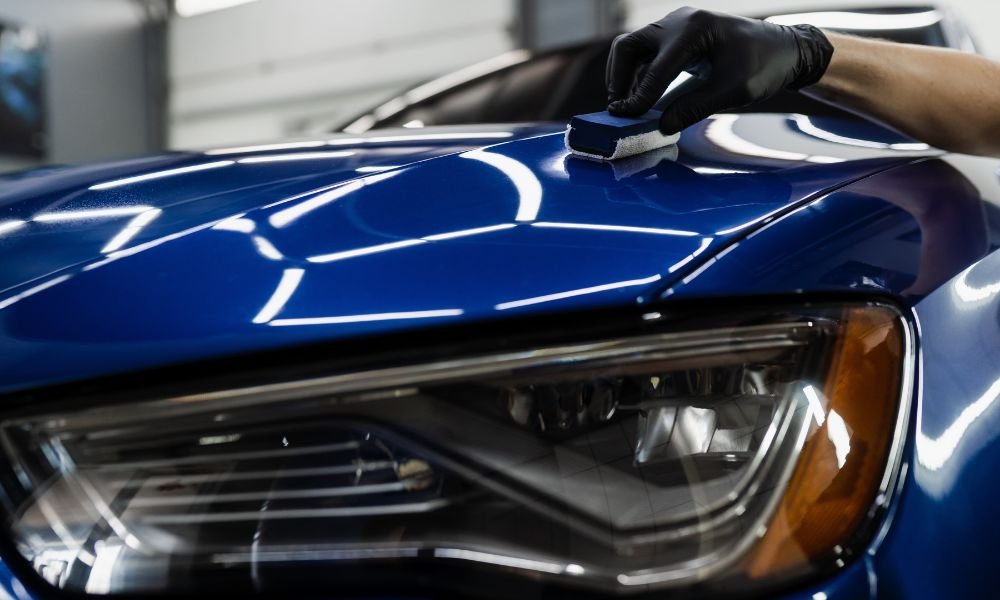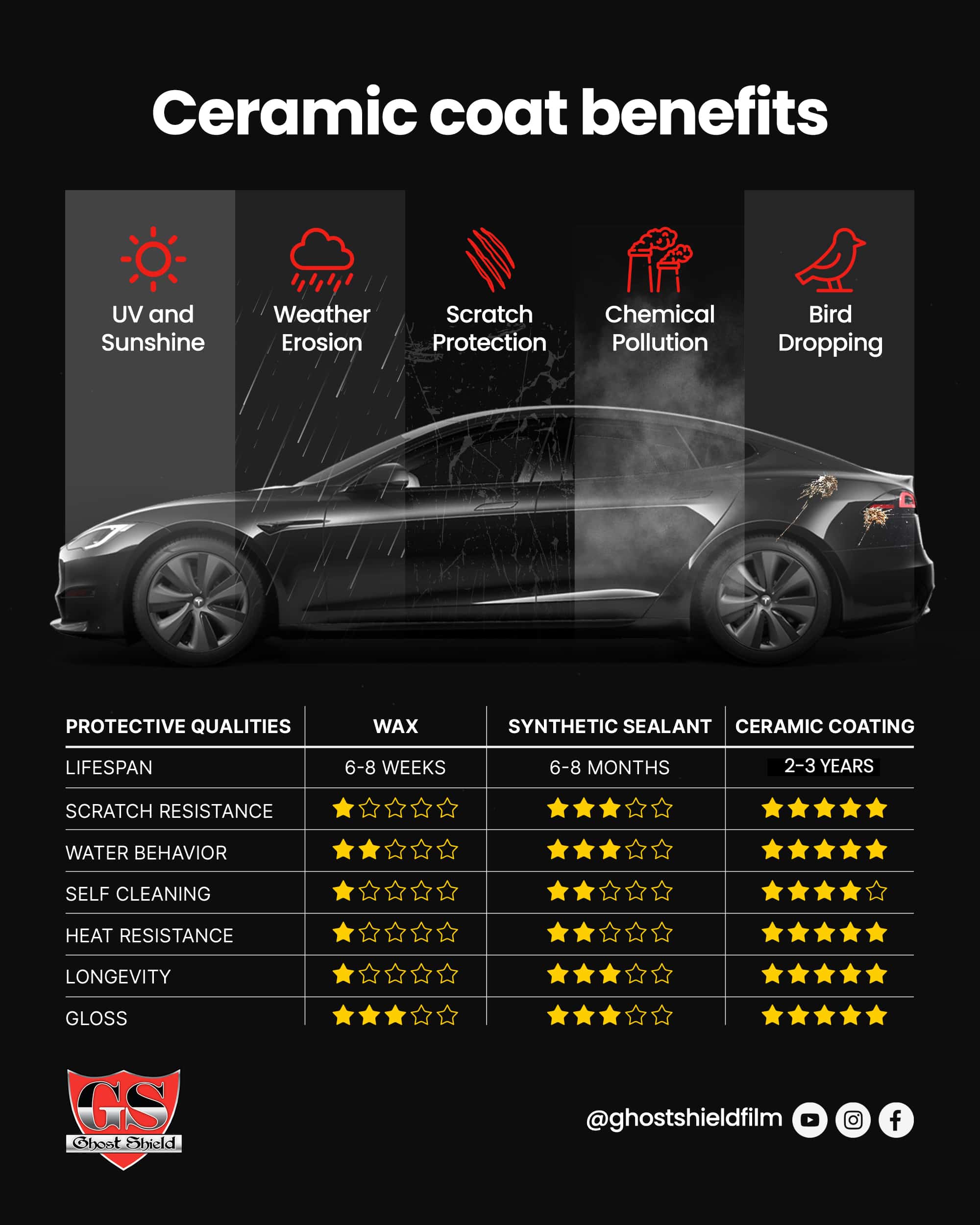Why Drivers Trust Ceramic Coating Philadelphia for Superior Automobile Care
Why Drivers Trust Ceramic Coating Philadelphia for Superior Automobile Care
Blog Article
Why Ceramic Coating Is the Ultimate Service for a Perfect Finish
Ceramic covering has actually become a leading option for those looking for a remarkable surface for their automobiles, thanks to its impressive sturdiness and safety functions. This innovative fluid polymer not only bonds seamlessly with factory paint but additionally offers a formidable obstacle versus usual dangers such as scratches, UV rays, and toxic wastes. Its hydrophobic properties streamline maintenance while boosting visual allure. Nevertheless, recognizing how this technology compares to conventional approaches and exploring its application subtleties can reveal also extra concerning its value. What factors really set ceramic coating apart?
What Is Ceramic Layer?

When applied appropriately, ceramic coating creates a hydrophobic surface that repels water and dirt, making it simpler to keep and cleanse. Unlike standard waxes or sealants, which commonly provide short-term security, ceramic finishings can last for a number of years, depending on the product high quality and application approach. The process of using ceramic finish calls for meticulous preparation, consisting of extensive cleansing and sometimes paint correction, to make sure optimum bonding and performance.
Ceramic coatings are not limited to automobile surfaces; they can also be used on different products, including glass, metal, and plastics, giving a functional solution for improving protection. Generally, ceramic covering represents a substantial improvement in surface area defense modern technology, integrating both aesthetic and practical benefits for a wide variety of applications.
Benefits of Ceramic Finish
While several surface security alternatives exist, the benefits of ceramic finish stand apart due to its unique residential properties and durable performance. Among the main advantages is its outstanding toughness. Ceramic Coating Philadelphia. Unlike standard wax or sealers that need constant reapplication, ceramic coatings provide a resistant layer that can last for a number of years, considerably decreasing upkeep initiatives
An additional remarkable advantage is boosted protection versus environmental pollutants. Ceramic layers produce a hydrophobic surface that repels water, dirt, and numerous pollutants, making it simpler to clean up. This attribute not only preserves the vehicle's look however likewise reduces the risk of deterioration and oxidation, specifically in severe weather conditions.
Additionally, ceramic finishings supply exceptional resistance to UV rays, preventing fading and deterioration of paint over time. This UV security is important for keeping the aesthetic worth of lorries and surfaces revealed to guide sunlight.
In addition, the glossy coating achieved with ceramic layer improves the general aesthetic allure, offering surface areas a showroom-quality sparkle. On the whole, ceramic finishes stand for a significant advancement in surface area defense modern technology, providing enduring advantages that provide to both practical and aesthetic needs.
Exactly How It Functions
Comprehending the scientific research behind ceramic finishings reveals just how they give such amazing protection and durability. At its core, a ceramic finishing is a fluid polymer that chemically bonds with the lorry's factory paint.
The application procedure includes numerous steps, including surface area preparation, which is important to achieving ideal attachment. Once used, the finish goes through a curing process, throughout which it sets and forms a semi-permanent bond with the paint surface. This bond is what differentiates ceramic finishes from traditional waxes and blog here sealers, providing a longer-lasting safety obstacle that can endure for many years.
Additionally, the density of the finish can boost its protective high qualities, making certain that it can hold up against harsh conditions. Eventually, the scientific research of ceramic finishings integrates innovative materials with cutting-edge application strategies to deliver an unrivaled level of security and aesthetic enhancement for vehicles.
Comparison With Conventional Approaches
The advantages of ceramic layers end up being particularly evident when contrasted to conventional paint security techniques such as waxes and sealants. While waxes use a short-lived shine, typically lasting a couple of weeks to a number of months, ceramic coatings offer a durable safety layer that can withstand for several years. This toughness dramatically decreases the frequency of reapplication, making ceramic coverings go to this site a much more cost-efficient service in time.
Furthermore, standard approaches frequently require extensive preparation and multiple applications to achieve a sufficient degree of defense. On the other hand, ceramic finishings bond at a molecular level with the automobile's surface, developing a robust guard against environmental contaminants like UV rays, acid rain, and road salts. This bond improves the automobile's resistance to scrapes and swirl marks, which are common with typical waxes and sealers.
Additionally, the hydrophobic residential properties of ceramic layers push back water and dirt, bring about simpler cleansing and maintenance. In comparison, wax and sealant-treated surfaces can bring in gunk, requiring more constant cleaning - Ceramic Coating Philadelphia. On the whole, ceramic coatings not only provide remarkable protection however also deliver a more aesthetically appealing and enduring surface, establishing them as the preferred choice for discerning automobile proprietors
Application and Upkeep Tips

Making use of a foam applicator, use the covering in small areas, following the manufacturer's guidelines pertaining to density and overlap. Allow sufficient curing time in between layers, typically 1 day, to make certain proper bonding. After application, it is vital to avoid direct exposure to water or harsh components for at the very least a week to enable the covering to fully treat.
For upkeep, wash the lorry routinely with pH-balanced soaps and prevent abrasive products. Touchless car cleans are advised to minimize scraping. In addition, utilizing a ceramic upkeep spray can enhance the covering's hydrophobic properties and durability. Normal inspections for any signs of wear will help maintain the finish's stability and preserve that excellent surface.
Verdict
In final thought, ceramic covering emerges as an exceptional choice for accomplishing a flawless automobile coating. By developing a durable bond with manufacturing facility paint, ceramic covering effectively guards against scratches, more helpful hints UV rays, and ecological contaminants.

Report this page